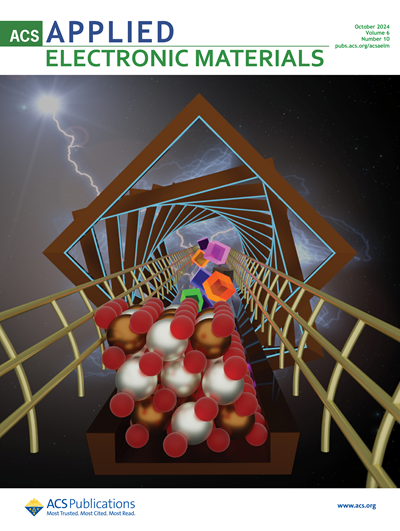一种新的巨型侏罗纪草蜻蛉幼虫揭示了一种特殊的水生习性及其对古生态学的意义
IF 4.7
3区 材料科学
Q1 ENGINEERING, ELECTRICAL & ELECTRONIC
引用次数: 0
摘要
神经蝶类是昆虫中的一个小型遗存类群,在中生代经历了快速的物种多样化,以保存在印模化石和琥珀中的各种已灭绝的特有类群而闻名。目前对中生代神经蝶类多样性的了解主要集中在成虫上,因为同时代的幼虫相当罕见,尤其是侏罗纪的草蜻蛉。本文描述了产自中国中侏罗世道虎沟地层的一种新的巨齿蛉幼虫--Natator giganteus gen.该幼虫体型巨大,宫颈明显拉长,腿上有游泳毛,这些都是侏罗纪草蜻蛉幼虫具有水生习性的直接证据。形态分析表明,这种巨型幼虫很可能栖息在侏罗纪山地河流和溪流的底栖环境中。此外,它的形态特化表明它可能采取了伏击捕食的策略来捕捉猎物。这一发现增强了我们对侏罗纪草蜻蛉幼虫的物种多样性和形态可塑性的认识,并揭示了神经龙科水生类群在整个进化过程中表现出显著的结构和生态趋同性。本文章由计算机程序翻译,如有差异,请以英文原文为准。
A new giant Jurassic lacewing larva reveals a particular aquatic habit and its significance to the palaeoecology
Neuroptera, as a small relic group of Insecta undergoing a rapid species diversification during the Mesozoic Era, is known by diverse extinct endemic lineages preserved as impression fossils and in amber. The current understanding of Mesozoic neuropterans′ diversity has mainly focused on the adults, because the contemporaneous larvae have been fairly rare especially for the Jurassic lacewings. Herein, a new giant lacewing larva, Natator giganteus gen. et sp. nov., is described from the Middle Jurassic Daohugou Beds of China. The remarkable larva is characterized by its impressively large body size, distinctively elongated cervix, and presence of swimming hairs on legs, which provide direct evidence to reveal an aquatic habit for the Jurassic lacewing larva. The morphological analysis indicates this giant larva would have probably inhabited the benthic environments of Jurassic montane rivers and streams. In addition, its morphological specialization suggests that it might have adopted an ambush predation strategy to catch its prey. The finding enhances our knowledge of the species diversity and morphological plasticity for the Jurassic lacewing larvae, and reveals that the aquatic lineages of Neuroptera exhibited dramatically structural and ecological convergence across the evolutionary process.
求助全文
通过发布文献求助,成功后即可免费获取论文全文。
去求助
来源期刊

ACS Applied Electronic Materials
Multiple-
CiteScore
7.20
自引率
4.30%
发文量
567
期刊介绍:
ACS Applied Electronic Materials is an interdisciplinary journal publishing original research covering all aspects of electronic materials. The journal is devoted to reports of new and original experimental and theoretical research of an applied nature that integrate knowledge in the areas of materials science, engineering, optics, physics, and chemistry into important applications of electronic materials. Sample research topics that span the journal's scope are inorganic, organic, ionic and polymeric materials with properties that include conducting, semiconducting, superconducting, insulating, dielectric, magnetic, optoelectronic, piezoelectric, ferroelectric and thermoelectric.
Indexed/Abstracted:
Web of Science SCIE
Scopus
CAS
INSPEC
Portico
 求助内容:
求助内容: 应助结果提醒方式:
应助结果提醒方式:


